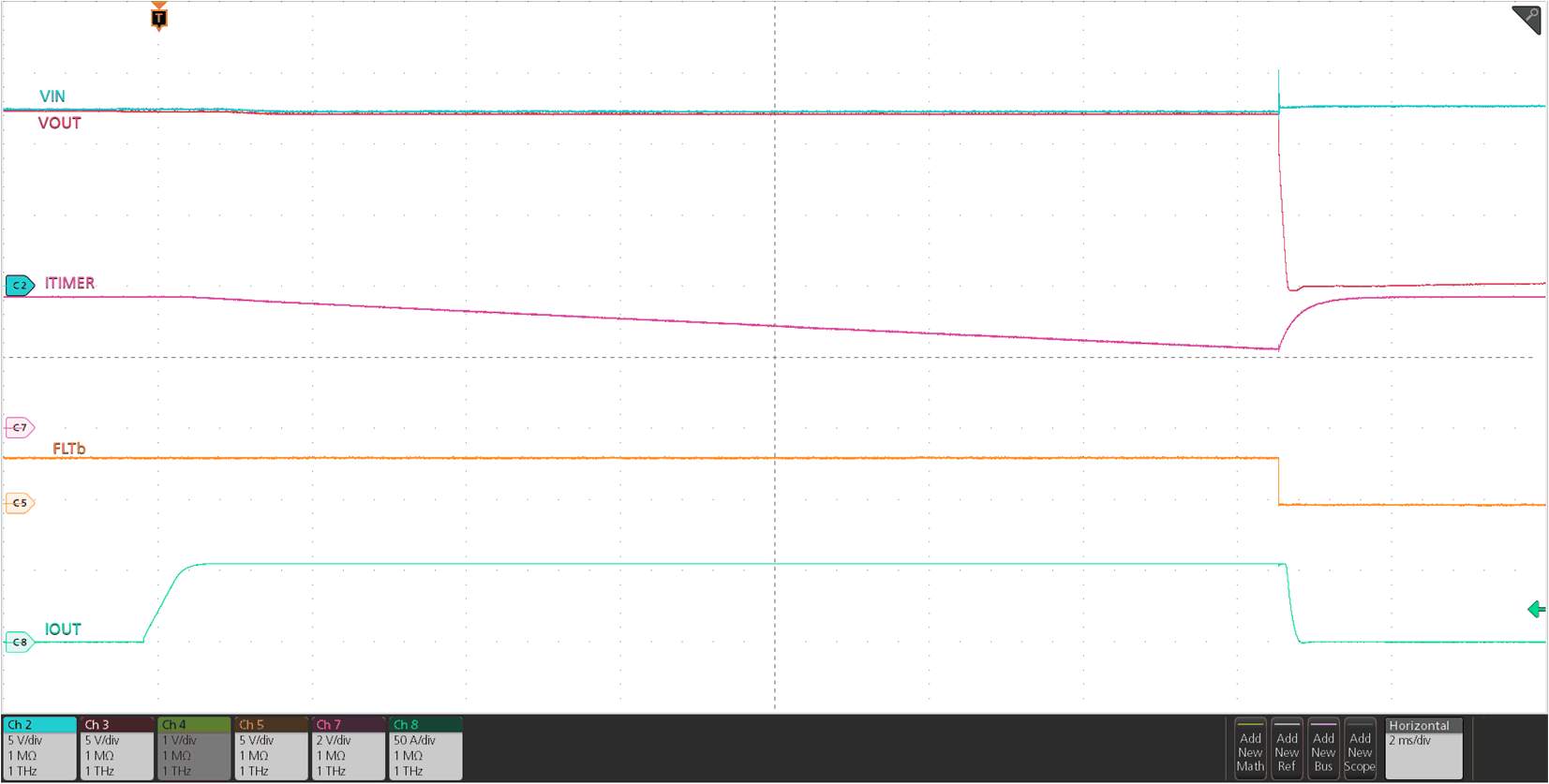SLVSHA1 September 2024 TPS1685
ADVANCE INFORMATION
- 1
- 1 Features
- 2 Applications
- 3 Description
- 4 Device Comparison Table
- 5 Pin Configuration and Functions
- 6 Specifications
-
7 Detailed Description
- 7.1 Overview
- 7.2 Functional Block Diagram
- 7.3
Feature Description
- 7.3.1 Undervoltage Protection
- 7.3.2 Insertion Delay
- 7.3.3 Overvoltage Protection
- 7.3.4 Inrush Current, Overcurrent, and Short-Circuit Protection
- 7.3.5 Analog Load Current Monitor (IMON)
- 7.3.6 Mode Selection (MODE)
- 7.3.7 Parallel Device Synchronization (SWEN)
- 7.3.8 Stacking Multiple eFuses for Unlimited Scalability
- 7.3.9 Analog Junction Temperature Monitor (TEMP)
- 7.3.10 Overtemperature Protection
- 7.3.11 Fault Response and Indication (FLT)
- 7.3.12 Power Good Indication (PG)
- 7.3.13 Output Discharge
- 7.3.14 FET Health Monitoring
- 7.3.15 Single Point Failure Mitigation
- 7.4 Device Functional Modes
- 8 Application and Implementation
- 9 Device and Documentation Support
- 10Revision History
- 11Mechanical, Packaging, and Orderable Information
6.8 Typical Characteristics

| Input supply ramped up |

| COUT = 144uF, CdVdt = 22nF |

| IOCP = 22A, tITIMER = 1.4 ms, IOUT pulsed above the IOCP threshold for short duration without triggering circuit-breaker response |

| IOCP = 22A, Output hard-short to GND while in steady. IOUT rises above 2 × IOCP triggers fast-trip response |

| Input supply held steady, EN/UVLO pin toggled high |

| Input supply ramped up above 65V |

| IOCP = 50 A, tITIMER = 14 ms, IOUT stays above the IOCP threshold persistently to trigger circuit-breaker response |

| Device turned on using SWEN with output hard-short to GND. Device limits the current with foldback. |